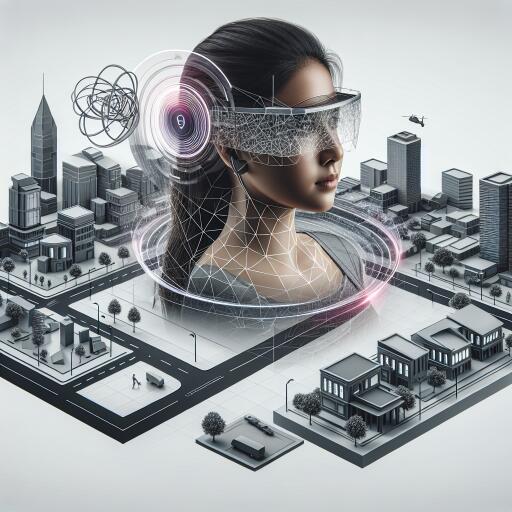AI-Powered Wearable Device Offers New Navigation Aid for the Blind and Partially Sighted
A groundbreaking wearable system, powered by artificial intelligence (AI), is transforming how blind and partially sighted individuals navigate their surroundings. Highlighted in the journal Nature Machine Intelligence, this innovative device employs cutting-edge AI algorithms to interpret visual data using a built-in camera, which it then translates into navigational guidance via audio and tactile feedback.
Breaking away from traditional mobility aids like white canes and guide dogs or more invasive solutions like retinal implants, this wearable system presents a non-invasive, technology-driven alternative. Historically, electronic visual aids have grappled with issues of complexity and usability, hampering widespread adoption. Leilei Gu and her team have devised a solution that makes navigation both intuitive and responsive, addressing these previous limitations.
The system’s heart lies in an AI-powered algorithm capable of processing video in real-time to identify paths free of obstacles. This information is then relayed to the user through bone conduction headphones. These headphones deliver spoken directions without obstructing ambient sounds, which is essential for maintaining environmental awareness and ensuring personal safety.
Apart from audio instructions, the device also incorporates soft, stretchable artificial skins that users wear on their wrists. These skins provide vibration signals to alert users to nearby lateral obstacles, prompting them to adjust direction accordingly. This multifaceted sensory integration, involving visual, auditory, and tactile inputs, offers a natural and effective navigational experience, enhancing user confidence and capability.
To test the system’s efficacy, researchers conducted experiments in both simulated settings and real-world environments, using humanoid robots as well as human participants with vision impairments. The trials showed marked improvements in the users’ abilities to avoid obstacles, navigate intricate paths such as mazes, and complete tasks like reaching and grasping objects after traversing unfamiliar areas.
The findings indicate that combining various sensory feedback mechanisms significantly boosts the functionality and usefulness of wearable visual aids. By marrying AI-powered vision analysis with haptic and audio feedback, this system marks a significant advancement in assistive technology.
Looking forward, researchers are committed to refining the system’s design and enhancing its performance. They are also eager to explore broader applications across other accessibility and mobility support areas. As the technology evolves, it holds the potential to empower blind and partially sighted individuals, enabling them to navigate independently and with increased confidence in their daily lives.










